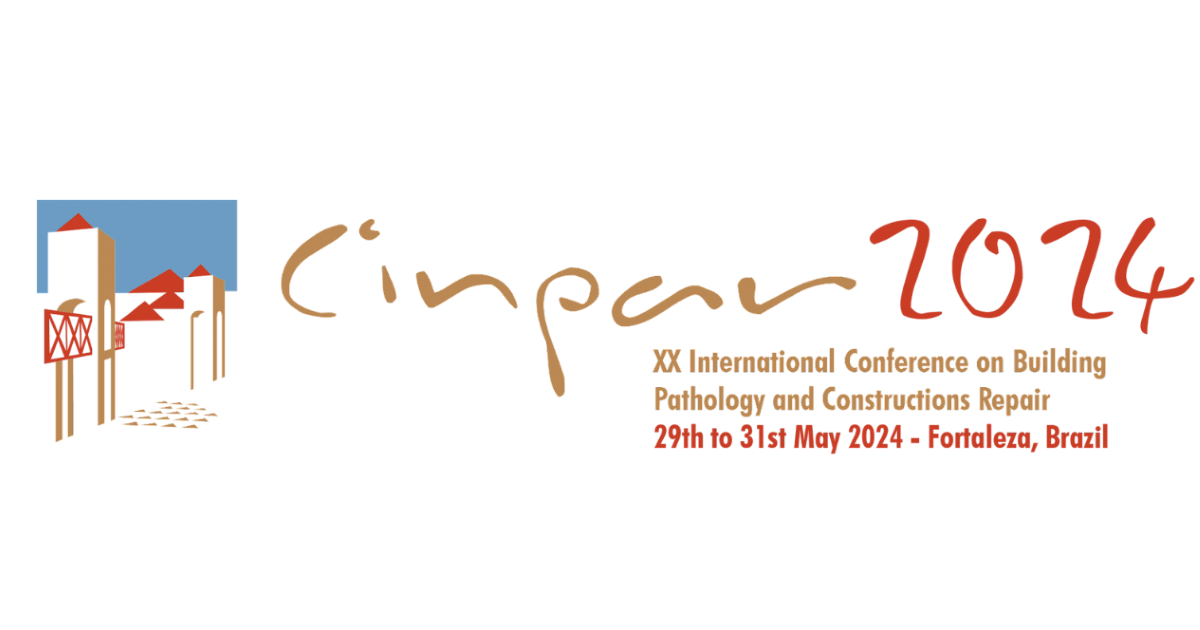Selected Papers from the 20th International Conference on Building Pathology and Constructions Repair (CINPAR 2024)
A special issue of Buildings (ISSN 2075-5309). This special issue belongs to the section "Building Materials, and Repair & Renovation".
Deadline for manuscript submissions: closed (15 August 2024) | Viewed by 1850

Special Issue Editors
Interests: sustainable materials; concrete; reuse of industrial waste; cement and cement composites technology; rehabilitation; durability
Interests: developing and characterising new cementitious materials (self-compacting concrete; eco-efficient concretes; high/ultra-high performance cementitious composites; digital concrete); non-conventional SCM (wastes valorisation); experimental factorial design and modelling of material behaviour; non-destructive testing and concrete durability
Interests: composite structures; steel structures; structural strengthening; construction engineering; finite element modeling; structural analysis; thermomechanical analysis; electromechanical analysis
Special Issue Information
Dear Colleagues,
The theme of building pathology and rehabilitation holds profound importance in today's context of sustainable infrastructure development. As the demand for resilient buildings surges, the significance of enhancing our understanding and practices regarding building pathology and repair cannot be overstated. With the construction sector accounting for nearly half of all raw material consumption and energy usage, it is imperative that we adopt sustainable methodologies.
In light of this, the XX International Conference on Building Pathology and Constructions Repair (CINPAR 2024), taking place from May 29th to 31st, 2024, in the city of Fortaleza, Brazil, serves as a catalyst for innovation and collaboration in addressing the challenges faced by the built environment.
Dedicated to exploring the multifaceted aspects of building pathology and construction repair, CINPAR 2024 is a global platform for researchers, academics, industry professionals, and policymakers to exchange insights, innovations, and best practices.
Selected papers from CINPAR 2024 will be featured in a Special Issue of the journal Buildings, entitled titled "Selected Papers from the 20th International Conference on Building Pathology and Constructions Repair (CINPAR 2024)". This Special Issue will showcase the latest research and advancements presented at the conference, fostering continued progress in building pathology and construction repair.
CINPAR 2024 promises to be a landmark event in the field of building pathology and construction repair, providing a forum for interdisciplinary dialogue, collaboration, and innovation. Join us as we explore sustainable solutions for resilient infrastructure and chart a course towards a safer, more resilient built environment for future generations.
We look forward to receiving your contributions and shaping the future of building pathology and construction repair through this Special Issue.
Prof. Dr. Laís Cristina Barbosa Costa
Prof. Dr. Ana Mafalda Matos
Prof. Dr. Jerfson Moura Lima
Guest Editors
Manuscript Submission Information
Manuscripts should be submitted online at www.mdpi.com by registering and logging in to this website. Once you are registered, click here to go to the submission form. Manuscripts can be submitted until the deadline. All submissions that pass pre-check are peer-reviewed. Accepted papers will be published continuously in the journal (as soon as accepted) and will be listed together on the special issue website. Research articles, review articles as well as short communications are invited. For planned papers, a title and short abstract (about 100 words) can be sent to the Editorial Office for announcement on this website.
Submitted manuscripts should not have been published previously, nor be under consideration for publication elsewhere (except conference proceedings papers). All manuscripts are thoroughly refereed through a single-blind peer-review process. A guide for authors and other relevant information for submission of manuscripts is available on the Instructions for Authors page. Buildings is an international peer-reviewed open access semimonthly journal published by MDPI.
Please visit the Instructions for Authors page before submitting a manuscript. The Article Processing Charge (APC) for publication in this open access journal is 2600 CHF (Swiss Francs). Submitted papers should be well formatted and use good English. Authors may use MDPI's English editing service prior to publication or during author revisions.
Keywords
- structural health monitoring and assessment
- durability and service life prediction
- rehabilitation techniques and materials
- sustainable construction and retrofitting
- non-destructive testing and evaluation
- building performance analysis
- disaster resilience and risk management
- historic preservation and conservation
- innovative repair technologies
- case studies and best practices
Benefits of Publishing in a Special Issue
- Ease of navigation: Grouping papers by topic helps scholars navigate broad scope journals more efficiently.
- Greater discoverability: Special Issues support the reach and impact of scientific research. Articles in Special Issues are more discoverable and cited more frequently.
- Expansion of research network: Special Issues facilitate connections among authors, fostering scientific collaborations.
- External promotion: Articles in Special Issues are often promoted through the journal's social media, increasing their visibility.
- Reprint: MDPI Books provides the opportunity to republish successful Special Issues in book format, both online and in print.
Further information on MDPI's Special Issue policies can be found here.







